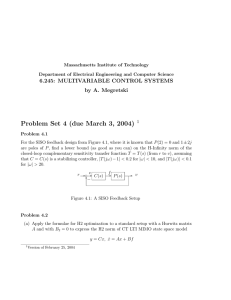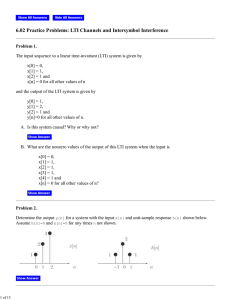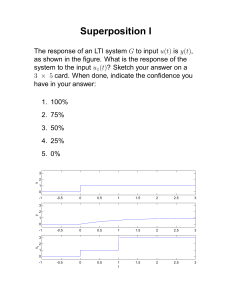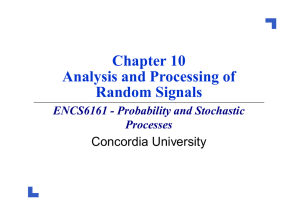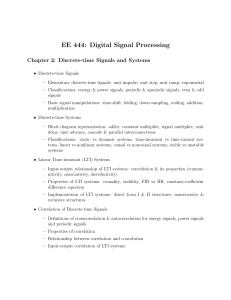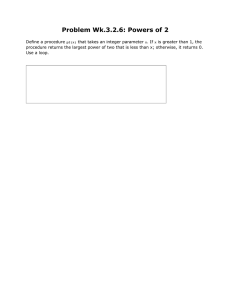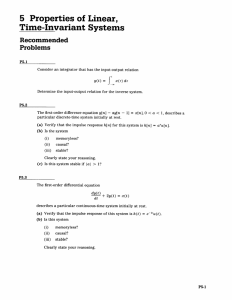Linear Time-Invariant Signals and Systems The Big Ideas:
advertisement
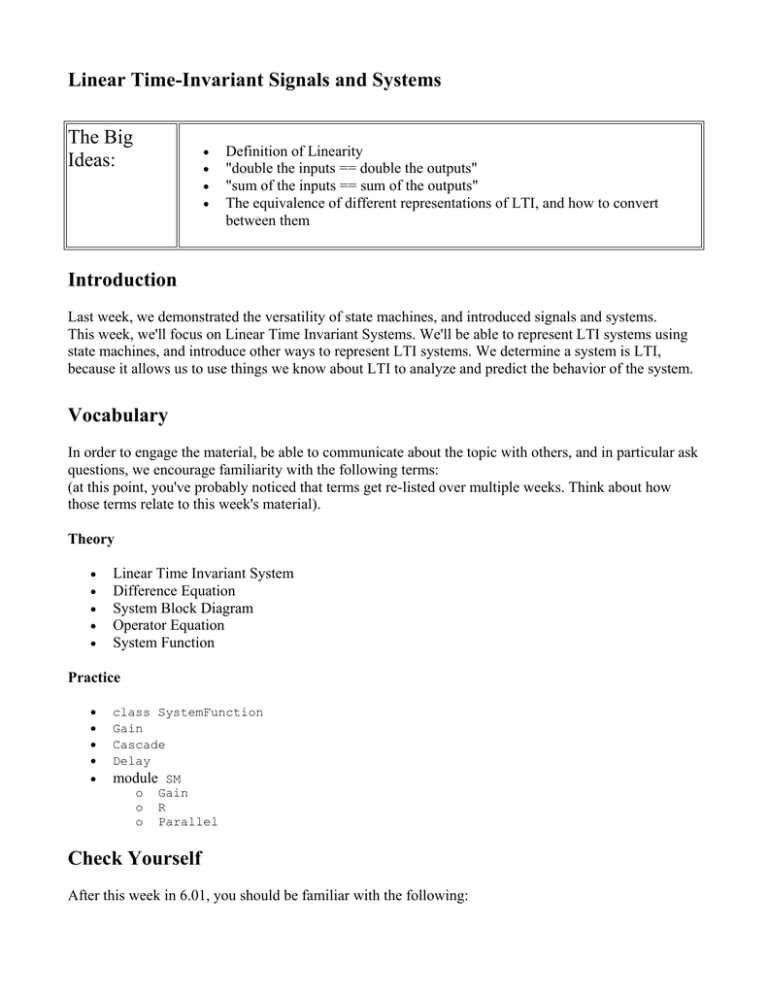
Linear Time-Invariant Signals and Systems The Big Ideas: Definition of Linearity "double the inputs == double the outputs" "sum of the inputs == sum of the outputs" The equivalence of different representations of LTI, and how to convert between them Introduction Last week, we demonstrated the versatility of state machines, and introduced signals and systems. This week, we'll focus on Linear Time Invariant Systems. We'll be able to represent LTI systems using state machines, and introduce other ways to represent LTI systems. We determine a system is LTI, because it allows us to use things we know about LTI to analyze and predict the behavior of the system. Vocabulary In order to engage the material, be able to communicate about the topic with others, and in particular ask questions, we encourage familiarity with the following terms: (at this point, you've probably noticed that terms get re-listed over multiple weeks. Think about how those terms relate to this week's material). Theory Linear Time Invariant System Difference Equation System Block Diagram Operator Equation System Function Practice class SystemFunction Gain Cascade Delay module SM o Gain o R o Parallel Check Yourself After this week in 6.01, you should be familiar with the following: Theory: you should understand: What makes a system LTI and why we want to identify them Practice: you should be able to: model complex systems by breaking them down into smaller systems model smaller systems using difference equations/block diagrams Resources Theory: The LTI part of Chapter 5 of the 6.01 Course Notes is relevant to this week. All of Chapter 5 is relevant to this unit. Practice: The 6.01 Software Documentation will come in handy, in particular modules sf and sm. You may want to take a look at ltism. MIT OpenCourseWare http://ocw.mit.edu 6.01SC Introduction to Electrical Engineering and Computer Science Spring 2011 For information about citing these materials or our Terms of Use, visit: http://ocw.mit.edu/terms.

